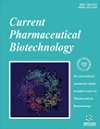
Full text loading...
We use cookies to track usage and preferences.I Understand

The gut microbiota is a varied population of microorganisms that live in the human gastrointestinal system. Emerging research emphasizes the importance of this microbial ecology in general health and its influence on a variety of disorders. The review explores the synergy between herbal treatment and traditional medicine, emphasizing their cultural significance and therapeutic benefits. It delves into the intricate relationship between herbal remedies, traditional healing practices, and their sustained usage over centuries. The review highlights the pivotal role of the gut microbiota in herbal medicine, elucidating how treatments influence the gastrointestinal microorganisms, impacting overall health. Dietary phytochemicals are underscored for their significance in herbal medicine and nutritional well-being, along with the interdependence of plant extracts and botanicals. The investigation explores the molecular connections between phytoconstituents and gut microbiota, aiming to deepen the understanding of herbal medicine's tailored approach to specific health challenges. The summary concludes by emphasizing herbal treatments' unique ability to regulate gut flora, contributing to overall gastrointestinal well-being. In closing, the review provides a concise overview, serving as a valuable resource for integrative medicine research, with recommendations for future exploration of herbal medicine's potential in healthcare.

Article metrics loading...

Full text loading...
References


Data & Media loading...